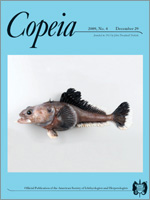Ephemeral pools are traditionally considered to be tadpole refuges, with few or no predators. While it is recognized that some tadpoles are predaceous, little attention has been given to understanding how tadpoles shape age and size structures of populations and the composition of tadpole assemblages. I examined the incidence of intraguild predation (IGP) among three species that co-occur in ephemeral pools in the Osa Peninsula, Costa Rica. I found a high incidence of IGP among the three species, with IG predators differing in their voracity for prey eggs and IG prey differing in their vulnerability to IGP. I also examined the factors that influence the intensity of cannibalism and tadpole performance in a model species, Smilisca phaeota. I manipulated predator and prey size and developmental stage, tadpole density, food quantity, and tadpole relatedness in microcosm experiments. Cannibalism in S. phaeota was dependent on tadpole predator and prey size and developmental stage, with medium and large tadpoles causing almost complete mortality of embryos, but little mortality of mobile hatchlings. In contrast, predation by small tadpoles was restricted primarily to the embryo developmental stage. Tadpole mortality was high in low plant food quantity treatments, suggesting a high incidence of cannibalism. Other measures of tadpole performance, including survival to metamorphosis, metamorph mass, and larval period, were influenced by tadpole density and plant food quantity. Additions of conspecific prey eggs and degree of tadpole relatedness did not affect tadpole performance. My results suggest that tadpoles are capable of playing a regulatory role, influencing the relative abundance and composition of species in pools through differential IGP and cannibalism on eggs and hatchlings. The intensity of IGP in ephemeral pools is likely influenced by the morphology of IG predators, reproductive mode and fecundity of IG prey, and priority effects. My study supports the view that we need to reconsider the position tadpoles occupy within the aquatic food webs, with greater appreciation for their role as predators.
How to translate text using browser tools
29 December 2009
The Ecological Significance and Incidence of Intraguild Predation and Cannibalism among Anurans in Ephemeral Tropical Pools
Tanya J. Hawley
ACCESS THE FULL ARTICLE





